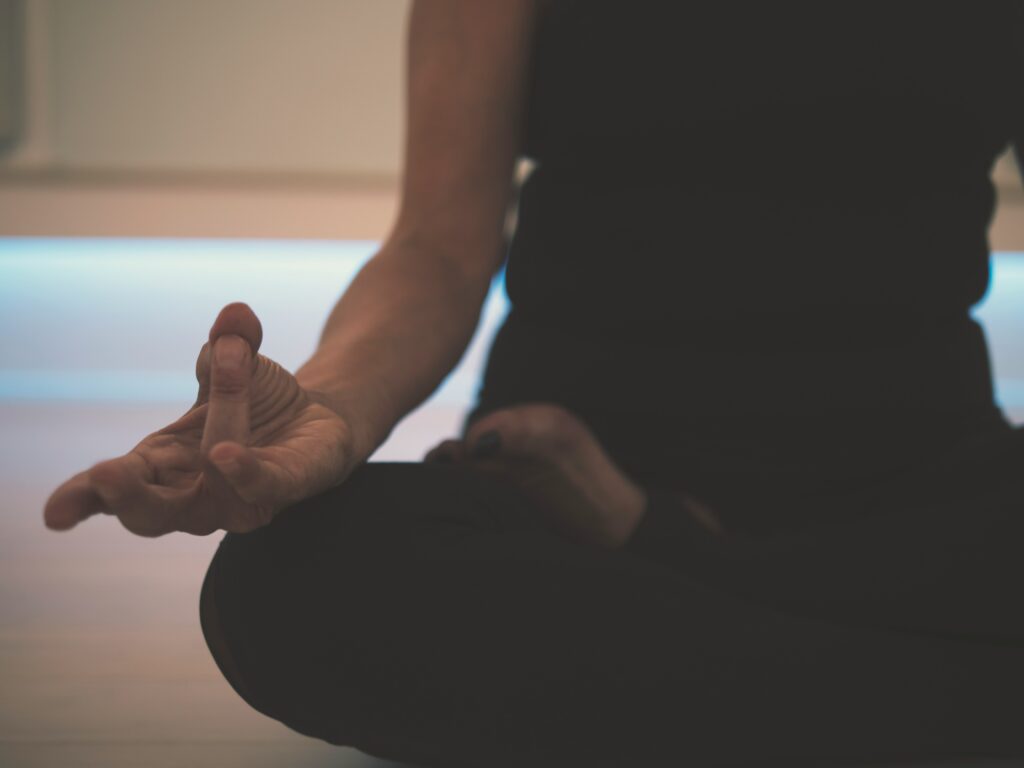
Meditation has been practiced for thousands of years, with many different disciplines, traditions, and lineages branching off one another over time. Nearly all of them, when practiced regularly and genuinely, can offer numerous benefits for the mind, body, and spirit.
There is no “one right way” to meditate. Meditation is personal. You may experience transformative benefits from one type of meditation while experiencing nothing from another. Try different things often enough and you’ll eventually develop your own way. It’s all about exploring your own mind, being playful with the practice, and seeing where it leads.
With so many forms of meditation available (and we’re not even scratching the surface in this article), it’s natural to wonder where to begin. In this blog post, we’ll explore ten different types of meditation to get you started.
Mindfulness Meditation
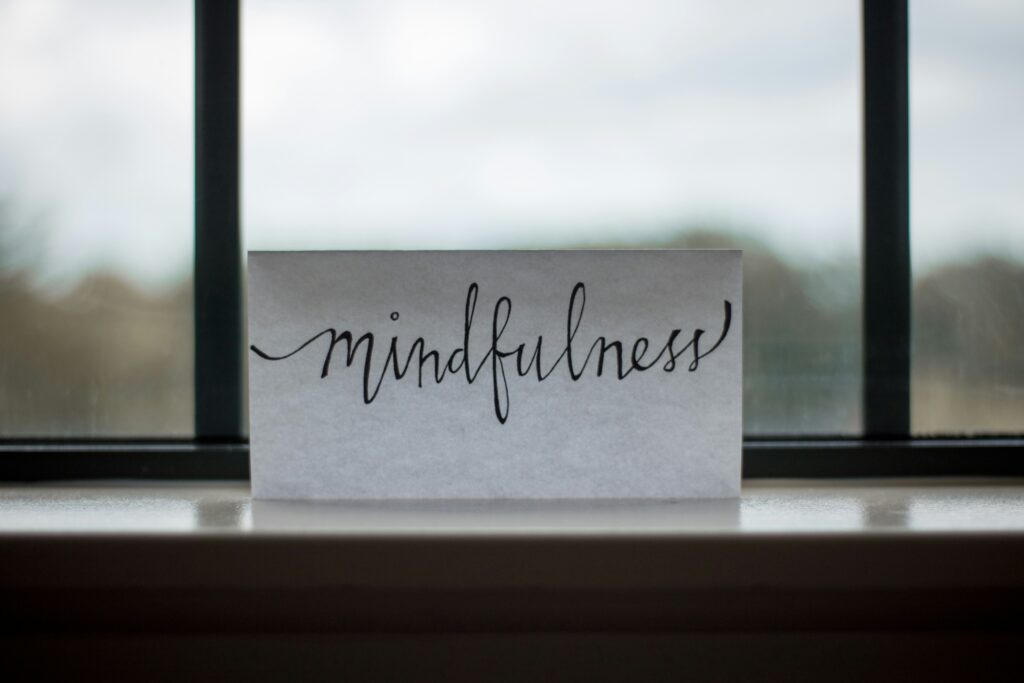
Start with the basics. Mindfulness meditation, rooted in Buddhist traditions, helps cultivate awareness and presence in the moment.
You can simply observe their thoughts, feelings, and sensations without judgment, promoting a state of non-reactive awareness. This type of meditation involves focusing on the breath or a bodily sensation, allowing distractions to pass without attachment.
Benefits:
- Reduces stress and anxiety
- Reduces reactivity
- Improves concentration and focus
- Enhances emotional regulation
- Promotes overall well-being
How to Practice:
- Find a quiet place and comfortably sit with a straight spine or lie down.
- Gently close your eyes and take a few deep, slow breaths to relax.
- Then breathe normally, focusing on each breath and noticing the sensation of each inhale and exhale wherever you physically feel it most (for example, your stomach, your chest, your nostrils, or even your head).
- When your mind wanders, acknowledge the thought or feeling (“Oh, hello, random thought!”) and gently bring your attention back to your breath.
Zazen Meditation

Zazen, or seated meditation, is central to Zen Buddhism. It emphasizes posture, breath, and the state of mind. Practitioners sit in a specific posture, usually cross-legged, and focus on their breath while maintaining a straight spine.
Zazen is traditionally practiced with the eyes open facing a wall or blank space to reduce distractions, with the gaze pointed slightly downward. Zazen aims to cultivate insight and enlightenment through disciplined practice.
Benefits:
- Deepens self-awareness
- Enhances concentration
- Fosters inner peace
- Cultivates spiritual growth
How to Practice:
- Find a quiet spot where you can face a blank wall.
- Sit on a cushion or chair with a straight back (a meditation bench can also be used).
- If seated, cross your legs or, if in a chair, sit towards the edge of the seat and place your feet flat on the ground.
- Keep your chin tucked in towards your chest, stretching out the back of your neck.
- Rest your hands in your lap, forming a cosmic mudra (left hand placed inside your right palm, both hands facing up, thumbs touching forming a circle). If your hands tend to slip, you can get meditation hand support cushions like these.
- Focus on your breath, counting each inhale and exhale up to ten, then start over. If you get distracted and lose count, simply return to one and start counting again.
Hatha Yoga
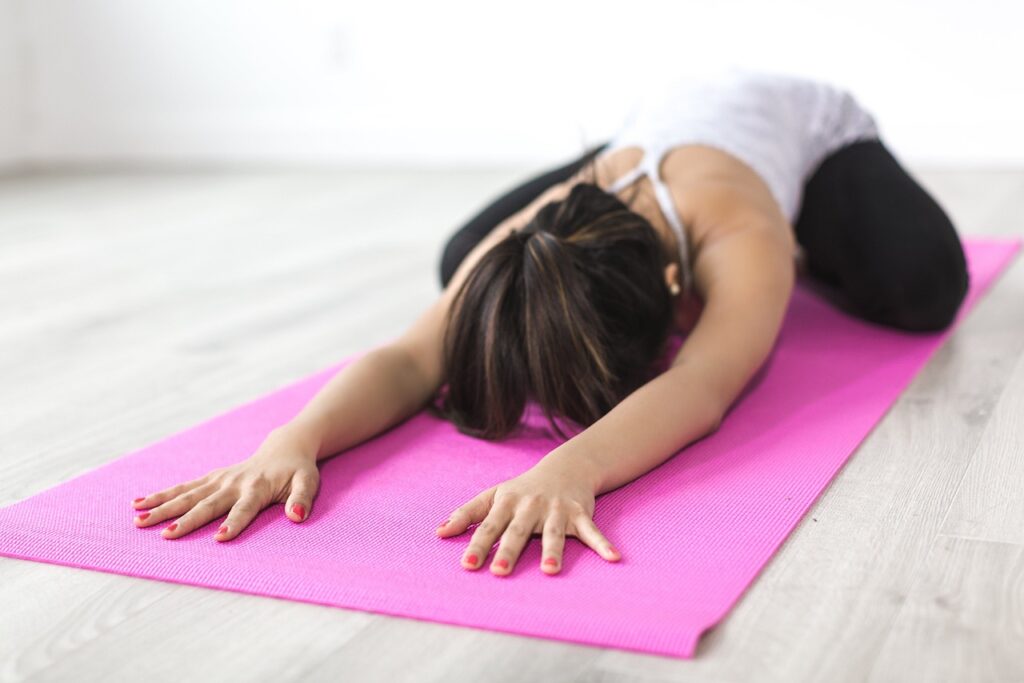
Hatha yoga is what we all think of when we think of “yoga” in the west. However, there are actually many different types of yoga, most of which do not involve complicated poses.
Hatha yoga combines physical postures (asanas) with breath control (pranayama) and meditation. It aims to balance the body and mind, preparing practitioners for deeper meditation. Hatha yoga emphasizes alignment, flexibility, strength, and relaxation.
Benefits:
- Improves physical health and flexibility
- Enhances mental clarity and focus
- Reduces stress and tension
- Promotes inner balance and harmony
How to Practice:
- Begin with a few minutes of mindful breathing to center yourself.
- Move through a series of yoga poses, focusing on alignment and breath. Because there are many specific poses, it’s best to start out by following an instructor, either in person or online or YouTube.
- End with a relaxation pose, such as Savasana, to integrate the practice.
Kriya Yoga

Kriya yoga is an ancient meditation technique popularized in the west by Paramahansa Yogananda. It involves specific breathing exercises (pranayama), meditation, and disciplined living. Kriya yoga aims to accelerate spiritual growth and achieve self-realization.
Benefits:
- Deepens spiritual connection
- Enhances mental clarity and focus
- Promotes emotional balance
- Increases vitality and energy
How to Practice:
The actual practice of kriya is a secret reserved for genuine spiritual seekers, so you need to learn the technique from a qualified instructor. However, a fundamental meditation may start with a round of sacred chanting before meditating as follows:
- Tense your entire body by squeezing all your muscles while you inhale deeply and slowly, then hold the breath while tensing for 3-5 seconds, then exhale and release the tension. Repeat this three times.
- Practice several rounds of measured breathing by inhaling slowly on a count of 6, 8, 12, or another number, holding the breath on the same count, and exhaling on the same count.
- Focus on mentally repeating the mantra “Hong-Sau”, or “I am He” or “I am Spirit,” chanting the word “Hong” during the inhalation and the word “Sau” on the exhalation.
- After repeating the Hong-Sau mantra for several minutes, let go of the mantra and place your attention at the point between your eyebrows while shifting your gaze upwards (with your eyes still closed).
Loving-Kindness Meditation

Loving-kindness meditation cultivates feelings of compassion and love towards yourself and others. In loving-kindness meditation, you silently repeat phrases that express good wishes towards someone, starting with yourself and repeating these mantras while envisioning others.
While you are initially learning the practice, you would typically imagine saying the mantras to loved ones. As you become more familiar with the practice, you would increase the difficulty by imagining yourself saying these mantras to mere acquaintances and eventually more difficult individuals in your life.
Benefits:
- Increases compassion and empathy
- Reduces negative emotions
- Enhances social connections
- Promotes emotional well-being
How to Practice:
- Sit comfortably and close your eyes.
- Settle into a relaxed state by focusing on your breath and, with each exhalation, release any tension in your body until you are completely relaxed.
- Imagine looking at yourself and repeat the phrase “May I be happy, may I be healthy, may I be safe, may I live with ease” several times.
- Then, imagine a loved one, or multiple loved ones, and repeat the mantra again several times towards your loved ones.
- Repeat this practice while imagining an acquaintance or acquaintances.
- Finally, repeat this practice while imagining someone in your life who is particularly difficult.
- Most importantly, try to feel the love each time you repeat the mantra.
Transcendental Meditation
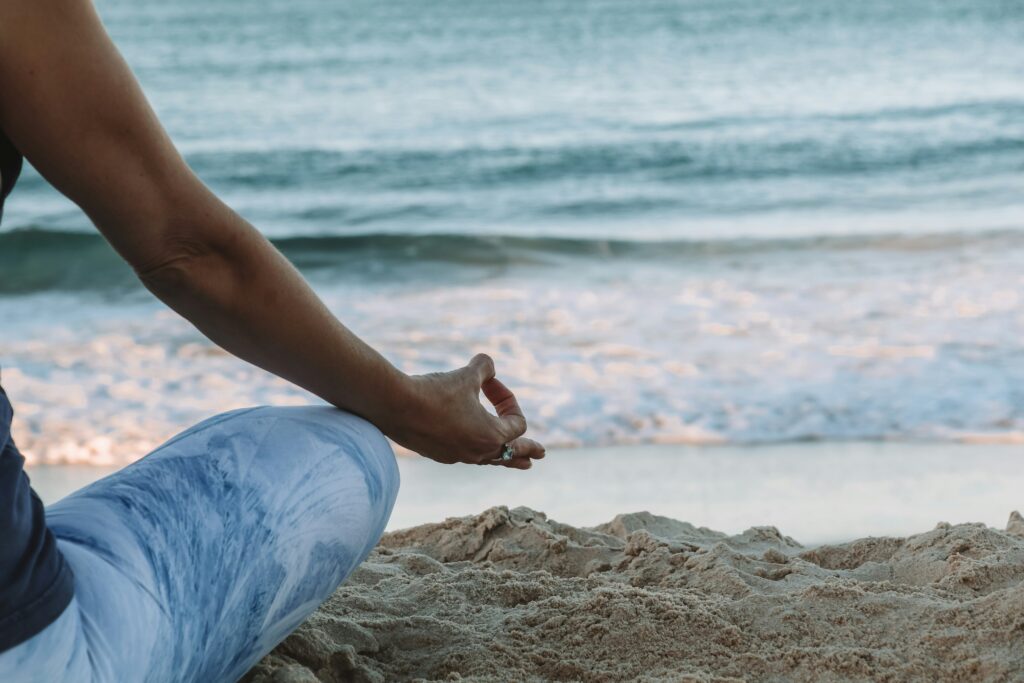
Transcendental Meditation (TM) involves the use of a mantra—a specific word or sound—repeated silently to settle the mind. TM, popularized by Maharishi Mahesh Yogi in the 1950s, is practiced for 15-20 minutes twice daily.
Similar to kriya yoga, you need a certified instructor to properly practice TM. After several one-on-one training sessions, the instructor will typically give you your mantra. You may have several follow-up sessions with your instructor before you’re let loose to practice on your own.
Benefits:
- Reduces stress and anxiety
- Improves focus and creativity
- Enhances overall well-being
- Promotes inner peace and relaxation
How to Practice:
- Sit comfortably with eyes closed.
- Silently repeat a mantra provided by a certified TM instructor.
- Focus on the sound of the mantra rather than the meaning.
- Allow the mantra to draw your mind inward, letting thoughts come and go naturally.
Kundalini Yoga
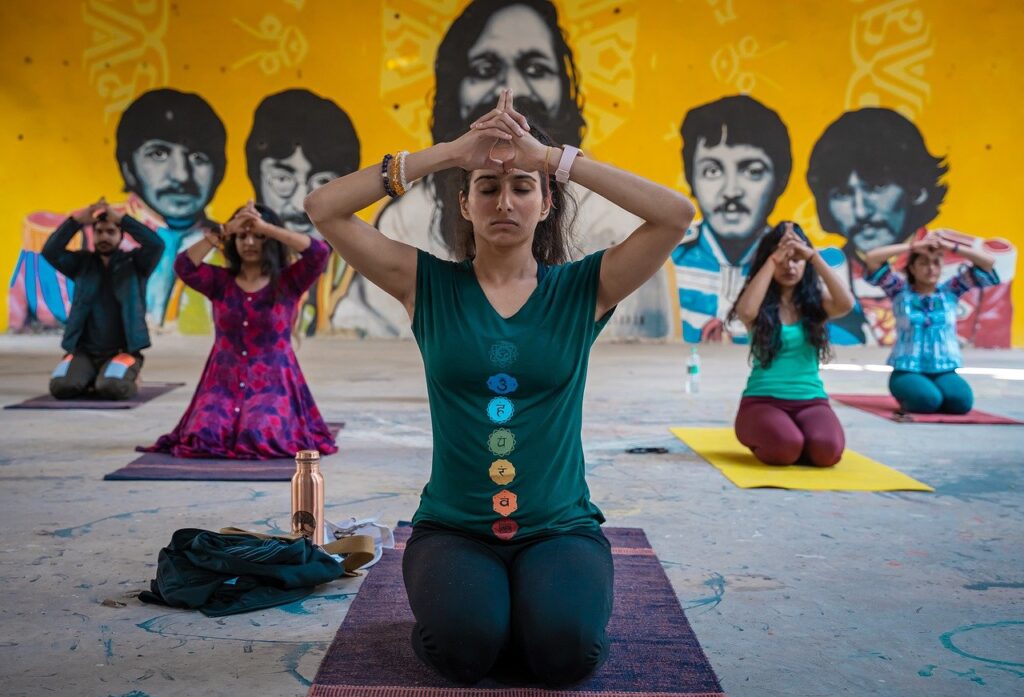
Kundalini yoga combines dynamic movements, breath control, chanting, and meditation to awaken the kundalini energy coiled at the base of the spine. This practice aims to balance the chakras, enhance spiritual awareness, and promote holistic well-being.
Benefits:
- Awakens spiritual energy
- Enhances mental clarity and focus
- Balances the chakras
- Promotes emotional healing
How to Practice:
- Begin with a warm-up, including breath exercises and stretching.
- Move through a kriya—a specific set of exercises, breathing techniques, and chants.
- End with meditation and relaxation to integrate the practice.
Visualization

Visualization meditation involves creating mental images to achieve a specific outcome or state of mind. This practice can enhance relaxation, focus, and goal achievement. Visualization is often used in sports psychology, self-improvement, and stress management.
Benefits:
- Enhances focus and motivation
- Reduces stress and anxiety
- Promotes positive thinking
- Supports goal achievement
How to Practice:
- Sit comfortably and close your eyes.
- Settle into a relaxed state of mind by focusing on your breath and releasing any tension in the body.
- Imagine a peaceful scene or a specific goal you want to achieve. The sky is the limit here; just use your imagination.
- Engage all your senses to create a vivid mental image, smelling the smells, feeling the surfaces, and hearing the sounds of your imagined environment.
- Spend a few minutes immersed in this visualization, feeling the emotions associated with it.
Mantra Meditation

Similar to TM, mantra meditation involves repeating a word, phrase, or sound (mantra) to focus the mind and achieve a deep state of meditation. The mantra can be spoken aloud or silently. This practice helps quiet the mind and cultivate inner peace.
Anyone can try mantra meditation. No instructor is required. There are plenty of places online to find various mantras to try.
Benefits:
- Reduces stress and anxiety
- Enhances concentration and focus
- Promotes inner calm and relaxation
- Deepens spiritual awareness
How to Practice:
- Choose a mantra that resonates with you, such as “Om” or “So Hum” or “I am not the body, I am not the mind.”
- Sit comfortably and close your eyes.
- Repeat the mantra silently or aloud, synchronizing it with your breath.
- Focus on the sound and vibration of the mantra, letting go of other thoughts.
Manifestation Meditation

Manifestation meditation focuses on using the power of the mind to attract specific outcomes or desires. Practitioners visualize their goals and affirm positive statements, believing that their thoughts and intentions can shape their reality.
Benefits:
- Increases motivation and confidence
- Enhances focus on goals
- Promotes positive thinking
- Supports personal growth and success
How to Practice:
- Sit comfortably and close your eyes.
- Settle into a relaxed state by focusing on your breath and releasing any tension in your body.
- Visualize your desired outcome in detail, feeling the emotions associated with it.
- Repeat positive affirmations related to your goal while feeling as if you have already reached it, such as “I am successful” or “I attract abundance.”
- Spend a few minutes immersed in these visualizations and affirmations.
Conclusion
There are so many ways to meditate, each with unique benefits and approaches. Whether you’re seeking to reduce stress, enhance focus, deepen spiritual awareness, or achieve specific goals, there’s a type of meditation that can help you.
By exploring these ten types of meditation, you can find the practice that resonates with you and integrate it into your daily life. Keep an open mind, approach your practice playfully, and try different things to find what works well for you.
Consistency is key to experiencing the full benefits of meditation. Embrace the journey, and allow meditation to transform your mind, body, and spirit.
By the way, if you’re looking for some advice on great meditation cushions and meditation mats, look no further than our articles on the Top 6 Zafus for the Perfect Meditation Session and the Top 5 Zabutons for Ultimate Meditation Comfort: A Detailed Review.
